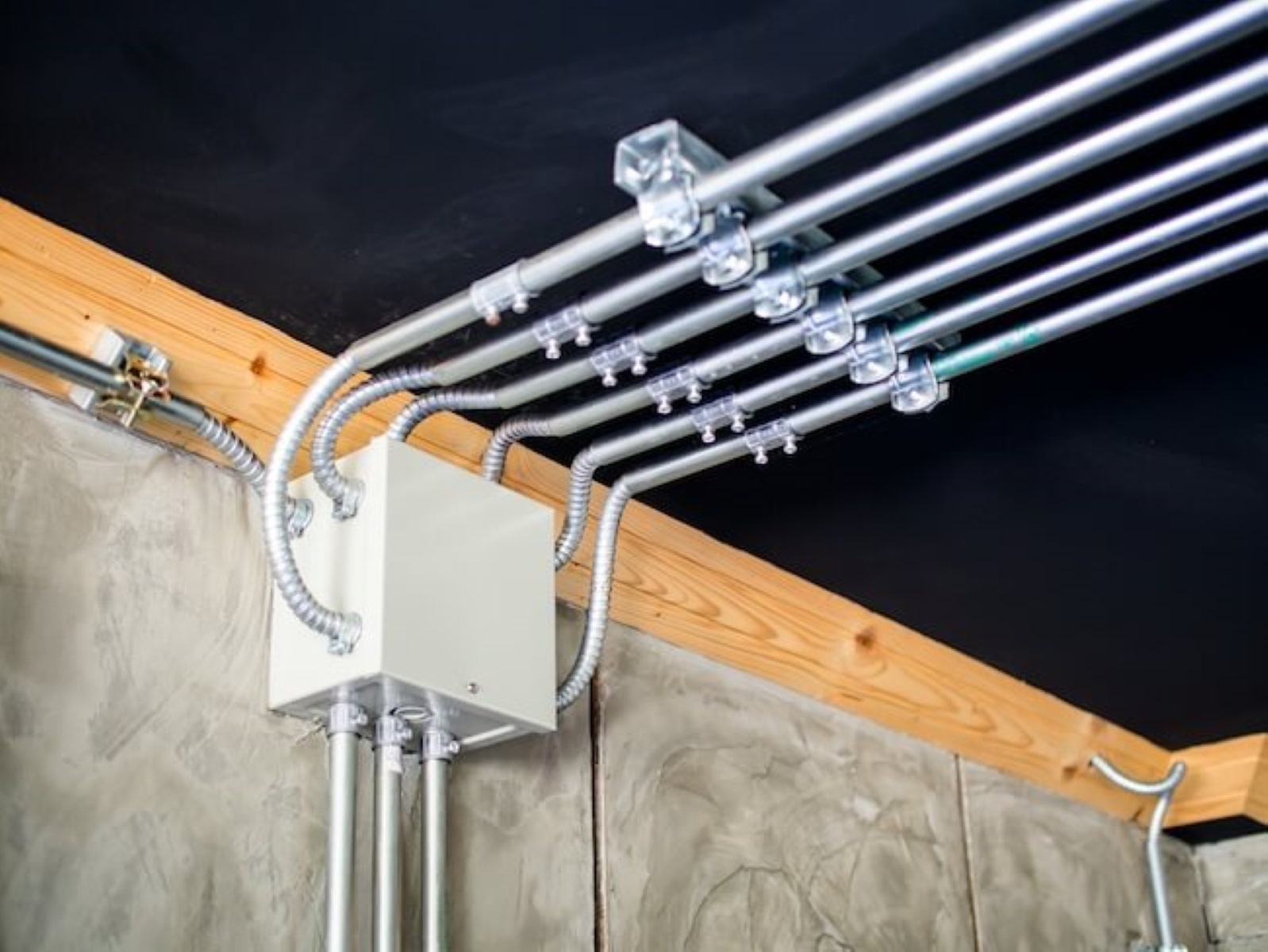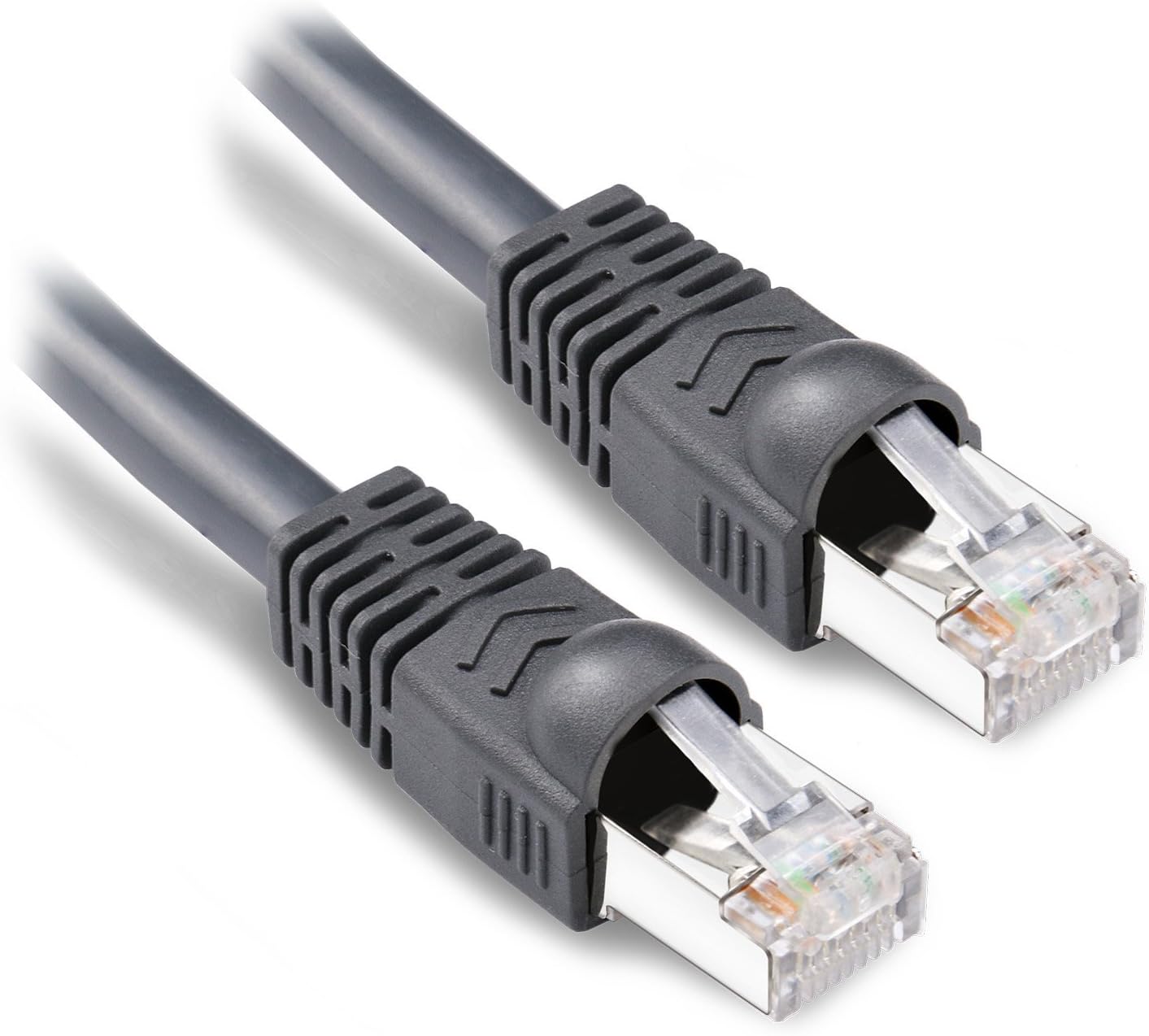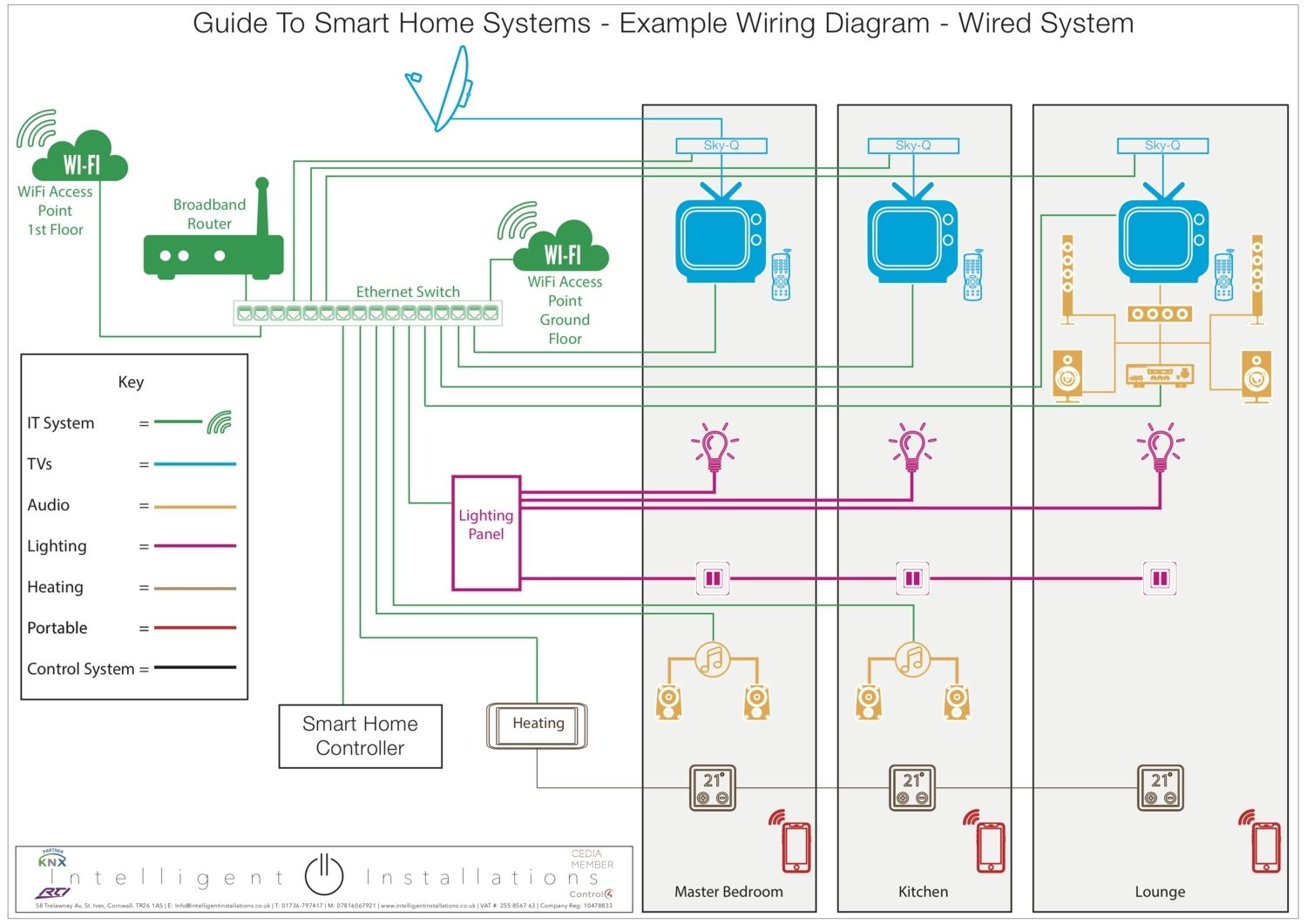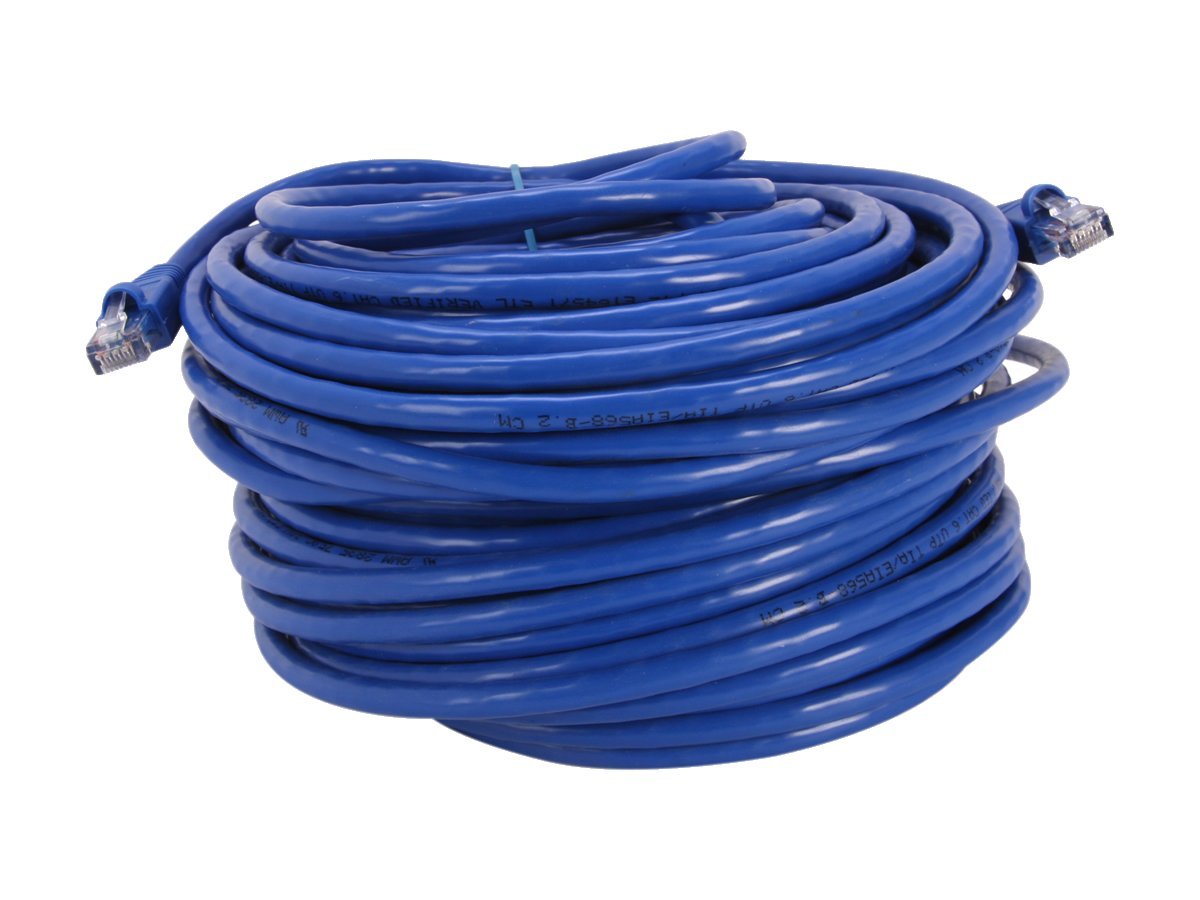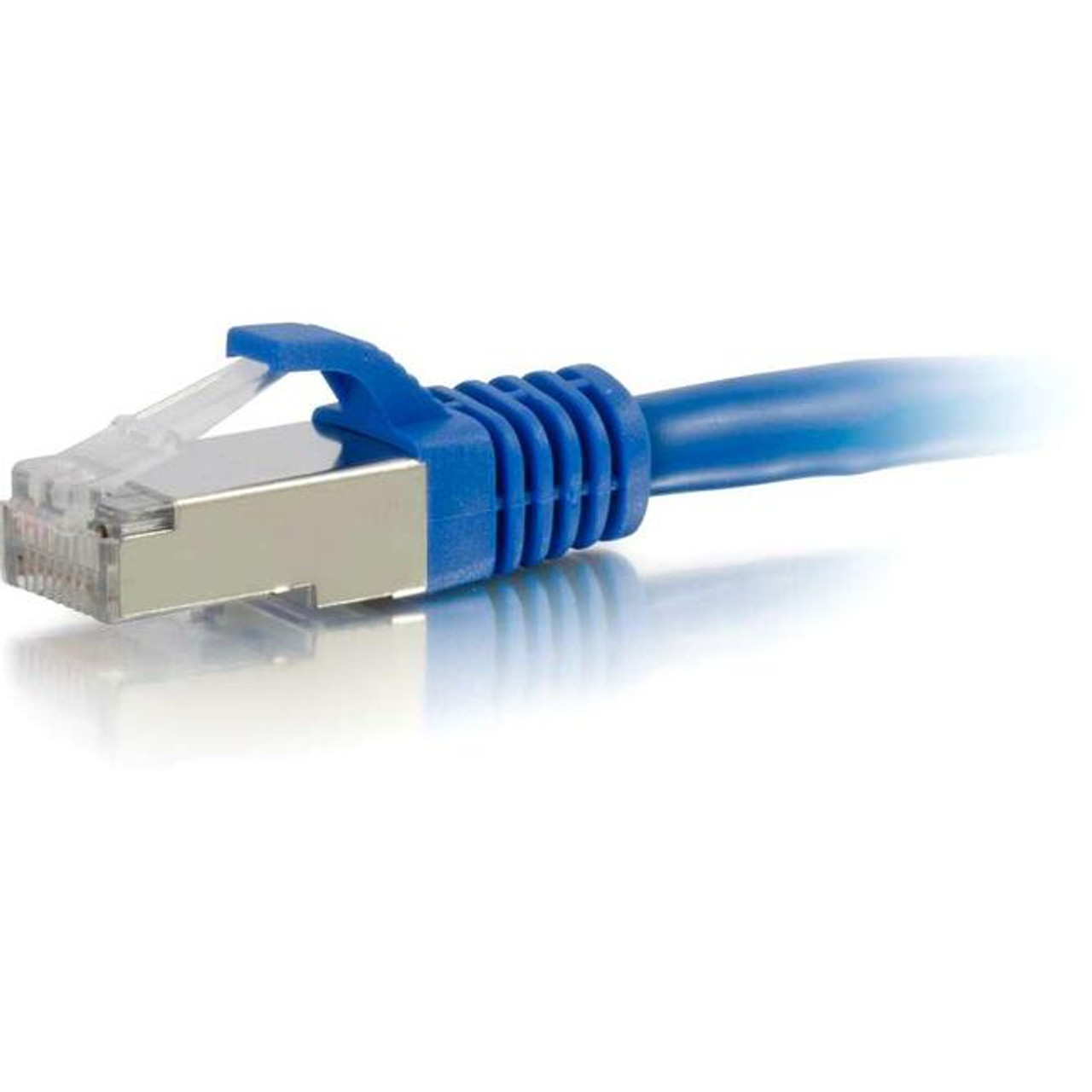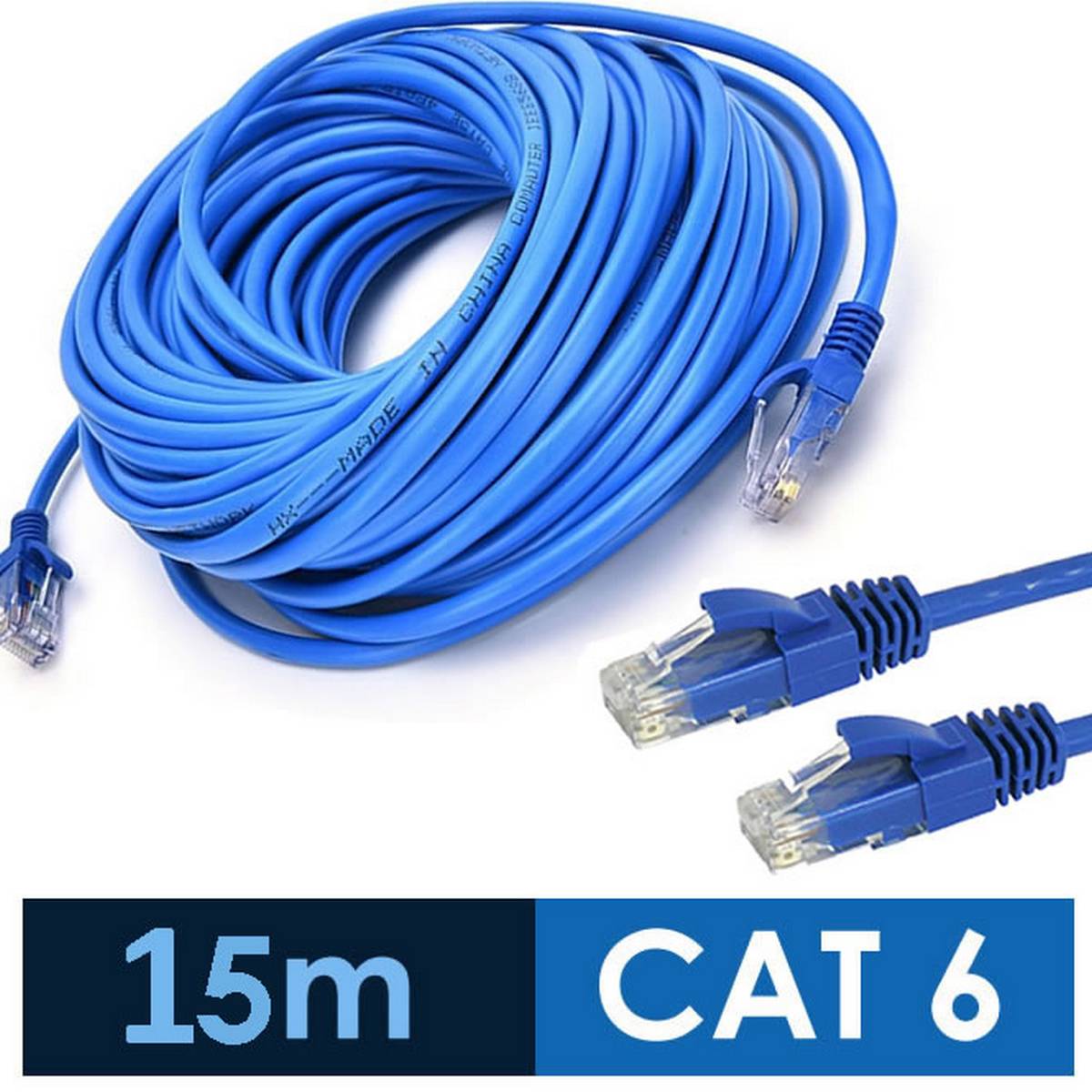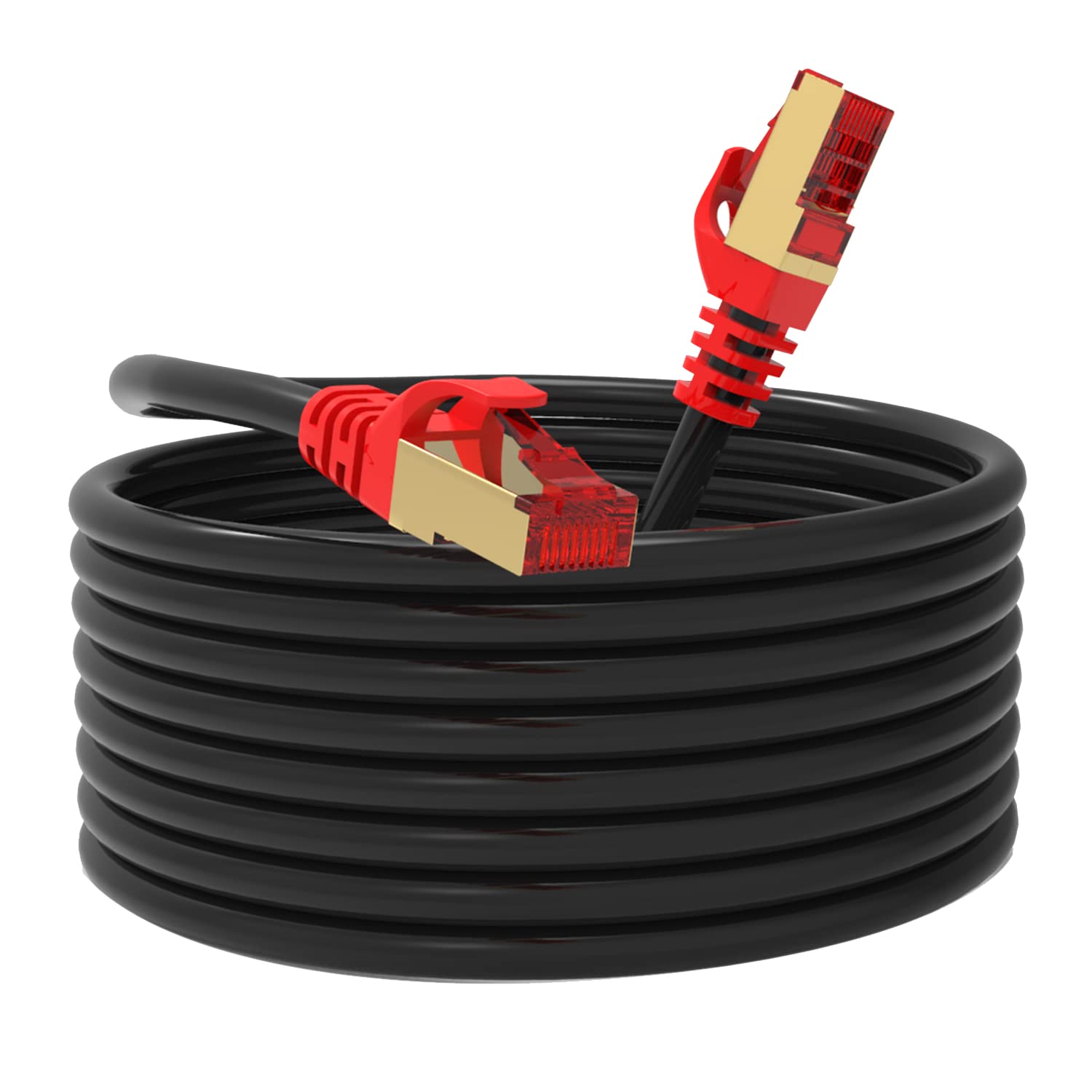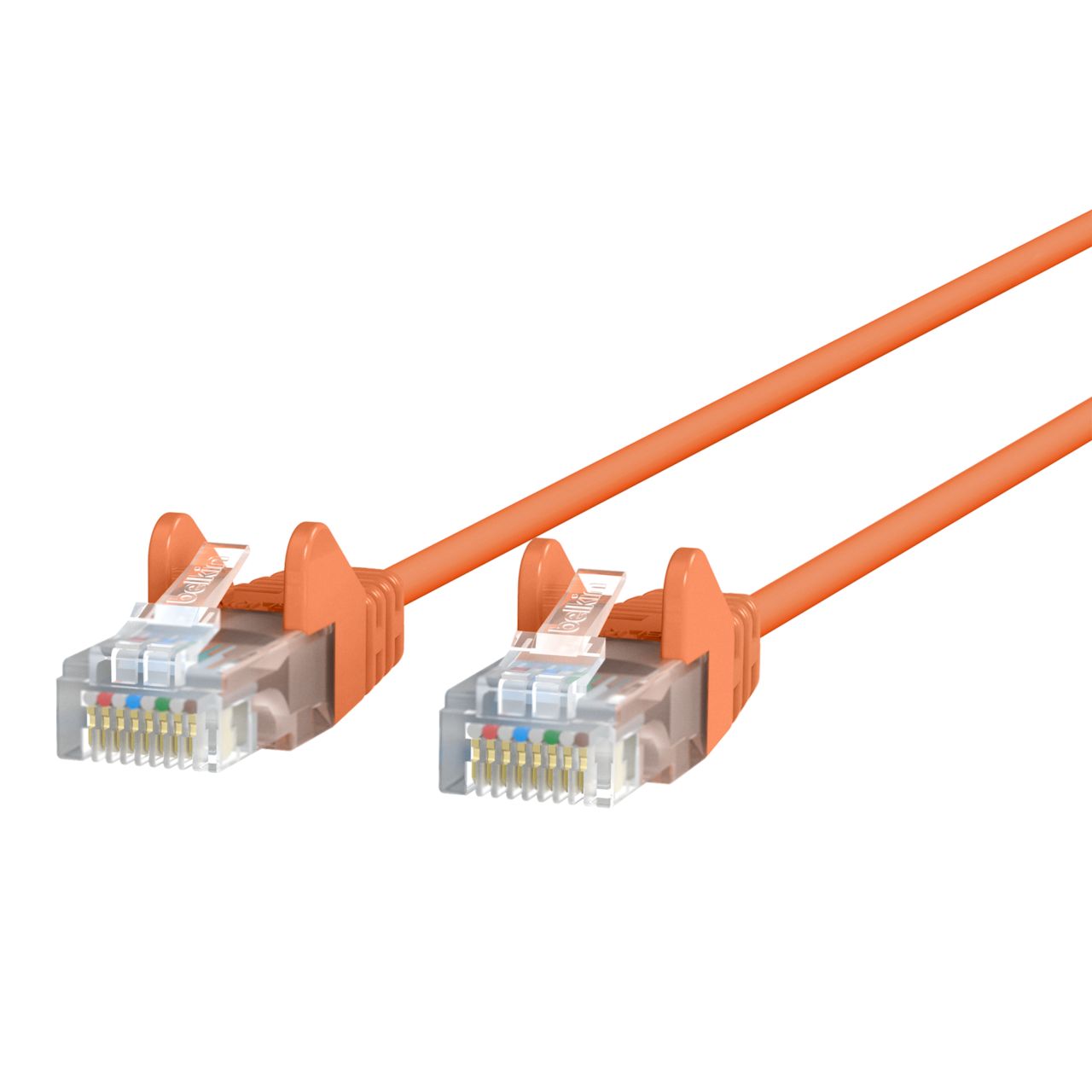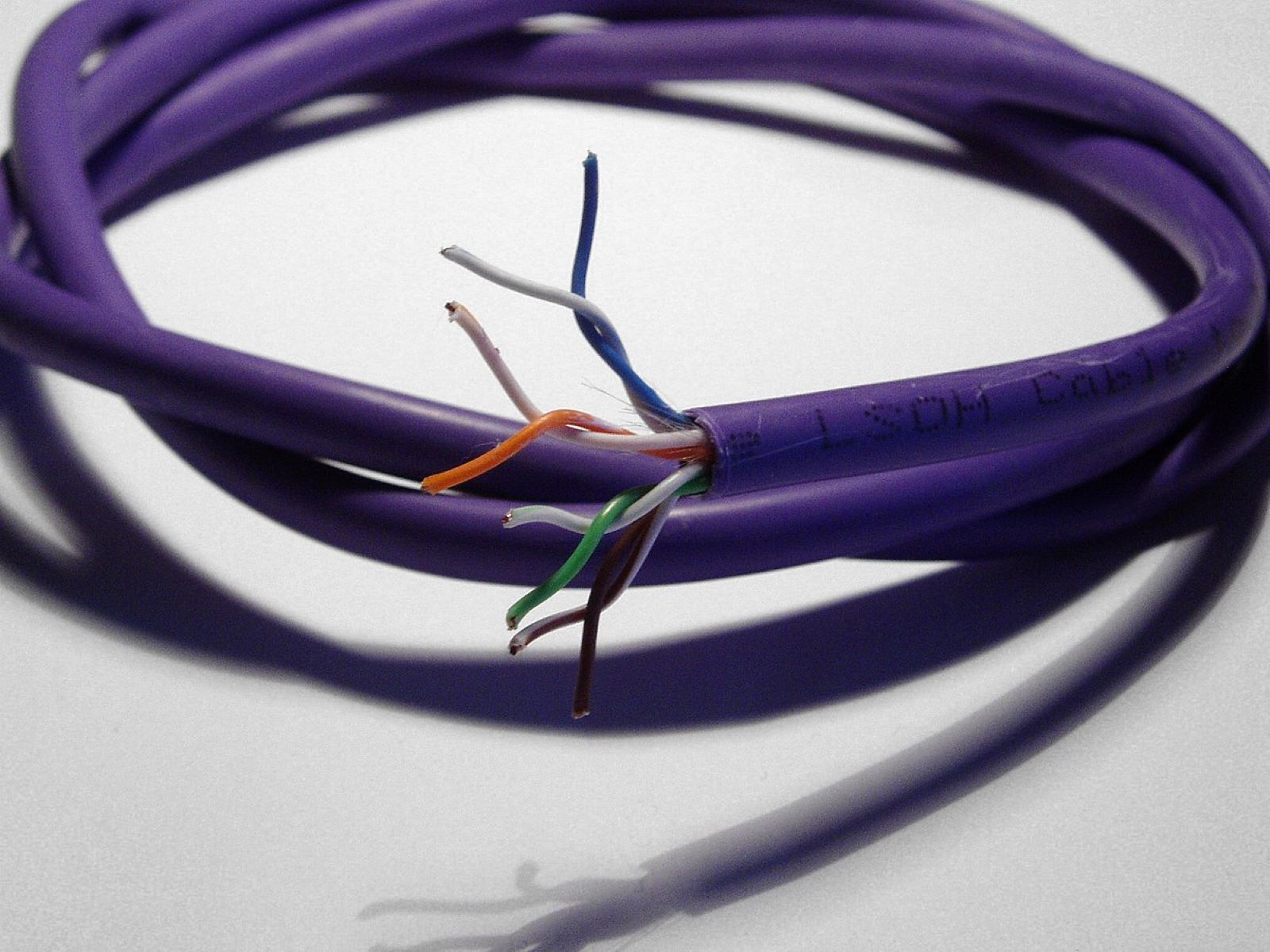Introduction
When it comes to setting up a network infrastructure, one common concern is the number of Ethernet cables that can fit inside a conduit. Conduits are commonly used to protect and organize cables, ensuring a cleaner and more efficient installation. Knowing the capacity of a conduit is essential to ensure that it can accommodate all the necessary cables without compromising the performance or integrity of the network.
The number of Ethernet cables that can fit inside a conduit depends on several factors, such as the size of the conduit, the diameter of the cables, the bend radius requirements, and the types of cables being used. It is crucial to consider these factors to avoid overcrowding the conduit, which can lead to signal degradation, cable damage, and difficulty in future maintenance or upgrades.
In this article, we will delve into these factors and provide guidance on determining the number of Ethernet cables that can fit inside a conduit. We will explore the different conduit sizes, cable diameters, bend radius requirements, and types of conduits that can be used. Additionally, we will introduce conduit fill charts, which are useful references for calculating the maximum number of cables allowed in a specific conduit size.
Whether you are setting up a new network or expanding an existing one, understanding the limitations and considerations for conduit capacity will help you optimize cable management and ensure a reliable and efficient network infrastructure. So let us dive into the details of conduit sizing and cable requirements to determine the maximum number of Ethernet cables that can fit inside a conduit.
What is Conduit?
Conduit, in the context of networking and cabling installations, refers to a tubular structure that is used to protect and contain cables. It acts as a housing or pathway for electrical, data, or communication cables, providing a safe and organized environment for cable routing. Conduits are typically made of metal (such as steel or aluminum) or plastic (such as PVC), and they come in various sizes and types to accommodate different cable requirements.
The primary purpose of conduit is to protect cables from environmental factors, such as moisture, dust, and physical damage. By enclosing the cables within the conduit, they are shielded from potential hazards that could compromise their performance or longevity. Additionally, conduits aid in cable management by keeping cables neatly organized and reducing the risk of tangling or entanglement.
Conduits also offer the flexibility to add, remove, or replace cables easily. Since cables are not directly exposed, it is more convenient to make adjustments or modifications without disrupting the entire network infrastructure. This makes conduits an ideal solution for installations that may require future expansions or upgrades.
Furthermore, conduits assist in maintaining compliance with safety codes and regulations. In many jurisdictions, it is mandatory to use conduit for specific types of cables or in certain environments where additional protection is required. By adhering to these regulations, organizations can ensure that their networking installations meet the necessary safety standards.
Overall, conduits play a vital role in network infrastructure by providing a secure and organized pathway for cables. They protect the cables from external elements, simplify cable management, facilitate future modifications, and ensure compliance with safety regulations. By understanding the purpose and benefits of conduits, it becomes easier to appreciate why they are an essential component of any successful networking or cabling installation project.
Factors to Consider
When determining the number of Ethernet cables that can fit inside a conduit, several factors need to be taken into account. These factors include the size of the conduit, the diameter of the cables, the bend radius requirements, and the number of cables being used. Let’s explore each of these factors in detail:
Conduit Size: The size of the conduit is one of the primary considerations. Conduits come in various sizes, typically measured in inches or millimeters, such as 1/2″, 3/4″, 1″, or 25mm, 32mm, 40mm, etc. The size determines the internal space available for cable routing. Smaller conduits have less space, while larger conduits accommodate more cables. It is crucial to choose the right conduit size that can accommodate the desired number of Ethernet cables without overcrowding.
Cable Diameter: The diameter of the Ethernet cables is another crucial factor. Different categories of Ethernet cables (such as Cat 5e, Cat 6, or Cat 6a) have varying diameters. Thicker cables occupy more space within the conduit, reducing the overall capacity. It is essential to know the diameter of the cables being used and consider it when calculating the maximum number of cables that can fit inside a conduit.
Bend Radius: Each Ethernet cable has a minimum bend radius requirement, which refers to the tightest curve that a cable can safely handle without signal degradation or damage. When planning the cable routing within a conduit, it is important to ensure that the bend radius requirements of the cables are met. Over-bending or exceeding the specified bend radius can cause signal loss and affect the overall performance of the network.
Number of Cables: The desired number of Ethernet cables to be installed in the conduit is a crucial consideration. Overcrowding the conduit with too many cables can lead to cable damage, signal interference, and difficulties in future maintenance. It is essential to determine the maximum number of cables that can be safely accommodated in the chosen conduit size, taking into account the cable diameter, bend radius, and any regulatory guidelines.
By considering these factors, network installers can make informed decisions about conduit size, cable selection, and cable routing to optimize efficiency, reliability, and future scalability. It is recommended to consult conduit fill charts and guidelines provided by industry standards organizations, cable manufacturers, and local electrical codes to ensure compliance and proper cable management practices.
Conduit Size
The size of the conduit is a critical factor when determining how many Ethernet cables can fit inside. Conduit sizes are typically measured in inches or millimeters and refer to the internal diameter of the conduit. The size impacts the amount of space available for cable routing and determines the maximum capacity of the conduit.
Conduits are available in a wide range of sizes to accommodate different cable requirements. Common sizes include 1/2″, 3/4″, 1″, 1-1/4″, and so on. It is essential to choose a conduit size that allows sufficient space for the desired number of Ethernet cables without overcrowding.
When selecting a conduit size, it’s important to consider future expansion. If there is a possibility of adding more cables in the future, it’s wise to choose a slightly larger conduit to allow for additional cables without the need for major modifications.
It’s also crucial to consider the space constraints of the installation environment. If the available space is limited, a smaller conduit size may be necessary. However, it’s important to ensure that the chosen conduit size can still accommodate the required number of cables without causing excessive congestion or compromising cable performance.
To determine the maximum number of Ethernet cables that can fit inside a conduit of a specific size, you can refer to conduit fill charts. These charts provide guidelines based on the conduit size and the diameter of the cables being used. They help calculate the percentage of conduit fill, allowing you to gauge whether the chosen conduit size is appropriate for the desired number of cables.
It’s important to note that conduit fill guidelines may vary based on regional electrical codes and industry standards. It’s recommended to consult the relevant codes and standards governing your area to ensure compliance with regulations.
By carefully considering conduit size, you can ensure sufficient space for cable routing and avoid overcrowding. Choosing the right conduit size will contribute to a well-organized and efficient network installation that allows for easy maintenance and potential future expansions or upgrades.
Cable Diameter
The diameter of the Ethernet cables used is another crucial factor to consider when determining how many cables can fit inside a conduit. Ethernet cables come in different categories, such as Cat 5e, Cat 6, Cat 6a, or Cat 7, each with varying cable diameters.
Thicker cables occupy more space within the conduit, reducing the overall capacity for cable routing. It is essential to know and consider the diameter of the cables being used when calculating the maximum number of cables that can fit inside a conduit.
To determine the cable diameter, it is recommended to refer to the manufacturer’s specifications for the specific cable category. The diameter information is usually provided in millimeters or inches. Using this information, you can calculate the space required by each cable and adjust the conduit capacity accordingly.
When selecting the conduit size, it is crucial to ensure that it can accommodate the chosen cable diameter comfortably. A conduit that is too small for the cable diameter may result in excessive cable congestion, which can lead to signal interference, cable damage, and reduced performance of the network.
It is also important to consider the bend radius requirements of the cables. Each Ethernet cable has a minimum bend radius specification, which represents the minimum allowable curve that the cable can withstand without signal loss or damage. A smaller conduit size combined with thicker cables may make it challenging to maintain the required bend radius, potentially affecting the cable performance.
Be sure to take into account not only the current cables but also any potential future additions or upgrades. If there is a possibility of adding more cables in the future, it is advisable to choose a conduit size that can accommodate the expected growth.
Properly considering the cable diameter and selecting an appropriate conduit size will help ensure optimal cable routing, reduce the risk of signal interference, and maintain the performance of the network installation. It is recommended to consult industry standards, guidelines, and manufacturer specifications to ensure compliance with best practices when choosing the conduit size based on cable diameter.
Bend Radius
The bend radius of Ethernet cables is an important factor to consider when determining how many cables can fit inside a conduit. The bend radius refers to the minimum allowable curve that a cable can safely handle without experiencing signal degradation or damage. It is essential to ensure that the recommended bend radius is maintained to preserve the performance and integrity of the cables.
Each Ethernet cable has a specified minimum bend radius, which is typically provided by the manufacturer. It is usually expressed in millimeters or inches and represents the radius of the smallest circle that the cable can be bent without causing any harm. Bending the cable beyond its minimum bend radius can result in signal loss, increased attenuation, and even cable breakage.
When planning the cable routing within a conduit, it is necessary to ensure that the bend radius requirements of the cables are met. Leaving sufficient space for cable bending allows for smoother cable routing and reduces strain on the cables. Failure to adhere to the specified bend radius can lead to compromised signal quality and increased chances of cable failure.
While selecting a larger conduit size may seem like a solution to accommodate tighter cable bends, it’s important to note that the overall capacity of the conduit can still be limited. Cables with larger diameters may require more space even when considering the bend radius.
To maintain the proper bend radius, it is recommended to use gentle curves and gradual bends when routing the cables within the conduit. Avoid sharp turns or kinks that can place excessive strain on the cables. It is also crucial to ensure that the conduit itself does not force the cables into tight bends, as this can cause damage over time.
By considering the recommended bend radius and allowing adequate space for cable bending, you can preserve the performance and lifespan of the cables within the conduit. Adhering to the bend radius requirements ensures that the cables can function optimally without experiencing signal loss or physical damage. Consult the manufacturer’s specifications and industry guidelines to determine the appropriate bend radius for the Ethernet cables being used.
Number of Cables
Determining the maximum number of Ethernet cables that can fit inside a conduit requires careful consideration of the number of cables being used. Overcrowding the conduit with too many cables can lead to various issues, including signal degradation, cable damage, and difficulties in future maintenance or upgrades.
To ensure optimal performance and cable management, it is important to strike a balance between utilizing the available space efficiently and avoiding overcrowding. The specific number of cables that a conduit can accommodate depends on factors such as the conduit size, cable diameter, and bend radius requirements.
Referencing conduit fill charts can be extremely helpful in determining the maximum number of cables allowed in a particular conduit size. These charts provide guidelines based on industry standards, taking into account the space requirements of different cable diameters. They typically indicate the percentage of conduit fill, allowing installers to calculate the appropriate number of cables based on the selected conduit size.
Additionally, it is crucial to consider any regulatory guidelines or local electrical codes that dictate the maximum fill capacity for conduits. These guidelines are put in place to ensure safety and prevent excessive cable congestion that could interfere with proper cable performance or increase fire risks.
When determining the number of cables, it is also important to consider future expansion or additions. If there is a possibility of requiring additional cables in the future, it is recommended to leave some room for growth. This proactive approach will help avoid the need for extensive modifications or installing new conduits down the line.
Working within the recommended guidelines and considering all relevant factors, such as conduit size, cable diameter, bend radius, and regulatory requirements, will help ensure that the maximum number of Ethernet cables are installed in the conduit without hindered performance or compromise of cable integrity. Proper cable management techniques should be employed to organize and secure the cables effectively within the conduit, preventing tangling or damaging.
Types of Conduit
When it comes to selecting a conduit for cable installations, there are various types available, each with its own unique characteristics and advantages. The choice of conduit type should be based on the specific needs and requirements of the installation project. Let’s explore some common types of conduits:
- Plastic Conduit: Plastic conduits, such as PVC (Polyvinyl Chloride), are widely used due to their affordability, versatility, and ease of installation. PVC conduits are corrosion-resistant, lightweight, and available in different sizes. They are suitable for both above-ground and underground installations and can be directly buried if needed. Plastic conduits are commonly used for residential and commercial applications.
- EMT Conduit: Electrical Metallic Tubing (EMT) conduits are made of thin-walled steel or aluminum. They are known for their excellent strength and durability while being lightweight and easy to bend. EMT conduits are commonly used in exposed areas where they provide protection against impact and physical damage. They are often used in commercial and industrial settings.
- Rigid Metal Conduit: Rigid Metal Conduit (RMC) is a heavy-duty conduit made of thick-walled steel. It offers the highest level of protection and is designed for demanding environments where superior structural integrity is required. RMC is typically used in industrial settings, outdoor applications, and areas where cables are exposed to extreme conditions or potential damage.
- Flexible Conduit: Flexible conduits, such as Flexible Metal Conduit (FMC) or Liquidtight Conduit, provide flexibility and ease of installation in applications where cable movement or vibration is expected. They are made of coiled metal or non-metallic materials and can be used in areas that require bending or twisting of cables, such as machinery, control systems, or outdoor installations.
- HDPE Conduit: High-Density Polyethylene (HDPE) conduits are durable, corrosion-resistant, and suitable for underground installations. HDPE conduits offer excellent protection against moisture, chemicals, and UV radiation. They are commonly used in long-distance telecommunications, utilities, and fiber optic cable installations.
These are just a few examples of the many types of conduits available in the market. The specific choice of conduit will depend on factors such as the installation environment, the type of cables being used, and any regulatory requirements in place. It is essential to select a conduit that provides the necessary level of protection, durability, and flexibility to meet the requirements of the network installation. Consulting with professionals or experts in the field can help determine the most suitable conduit type for specific applications.
Conduit Fill Charts
Conduit fill charts are valuable resources that help determine the maximum number of cables that can fit inside a conduit of a specific size. These charts provide guidelines based on industry standards and take into account factors such as conduit size, cable diameter, and any regulatory requirements in place.
Conduit fill charts typically indicate the maximum fill percentage allowed for different conduit sizes. The fill percentage refers to the proportion of the conduit’s internal space that can be occupied by cables. The charts provide a clear visual representation of the allowable fill percentage, making it easier to determine the number of cables that can be safely installed.
To use a conduit fill chart effectively, you will need to know the conduit size and the diameter of the cables being used. The cable diameter is usually provided by the cable manufacturer and can be found in their specifications. Based on these values, you can find the corresponding conduit fill chart and locate the relevant conduit size.
Once you have identified the appropriate conduit size on the chart, you can determine the maximum allowable fill percentage. This percentage will depend on the specific application and any applicable regulations. By multiplying the conduit’s internal area by the fill percentage, you can calculate the maximum area that can be occupied by the cables. This calculation will help you determine the number of cables that can fit within the given conduit size.
It is important to note that conduit fill charts serve as a general guide and may vary based on regional electrical codes or specific industry standards. It is recommended to consult the appropriate codes and standards governing your area to ensure compliance and proper cable management practices.
Using conduit fill charts ensures that cables are properly installed and prevents overfilling the conduit, which can lead to signal degradation, cable damage, and increased fire risks. Adhering to the guidelines provided by the charts helps maintain the performance and integrity of the network installation.
When utilizing conduit fill charts, it is crucial to select the appropriate chart that matches the conduit size and consider any additional factors that may impact the cable installation, such as bend radius requirements or potential future cable expansions. By doing so, you can ensure a well-organized and optimized cable management system that promotes a reliable and efficient network infrastructure.
Conclusion
Determining the number of Ethernet cables that can fit inside a conduit is crucial for a successful network installation. By considering factors such as conduit size, cable diameter, bend radius requirements, and the types of conduits available, one can ensure efficient cable management and maintain the performance of the network infrastructure.
The size of the conduit plays a significant role in accommodating the desired number of cables. It is important to select an appropriate conduit size that allows for efficient cable routing without overcrowding. Additionally, considering the cable diameter is essential to ensure that the conduit can accommodate the cables while maintaining optimal performance.
Adhering to the bend radius requirements of the Ethernet cables is paramount. Proper cable bending prevents signal degradation and cable damage. By following the recommended guidelines for the minimum bend radius, one can ensure the long-term reliability of the network installation.
Understanding the capacity of the conduit and calculating the maximum number of cables allowed is made easier with the use of conduit fill charts. These charts help determine the fill percentage and guide the selection of the appropriate conduit size based on cable diameter and regulatory requirements. Consulting conduit fill charts ensures compliance with industry standards and proper cable management practices.
Lastly, considering the various types of conduits available allows for tailoring the selection to specific installation needs. Whether it is PVC, EMT, rigid metal, flexible, or HDPE conduit, choosing the right type ensures suitable protection and durability for the cables.
In conclusion, taking into consideration the factors mentioned above empowers network installers to make informed decisions regarding conduit size, cable diameter, bend radius, and the number of cables. By doing so, they can successfully maximize the capacity of the conduit, maintain cable integrity, and create a well-organized network infrastructure that delivers reliable and efficient connectivity.







